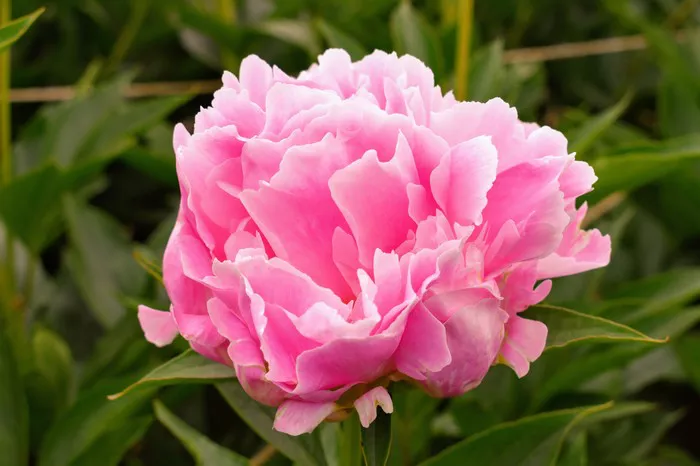Flowers, with their enchanting beauty and diverse array of colors, have captivated humans for centuries. From ancient times to modern-day, they hold significant cultural, aesthetic, and symbolic value across various societies. Among the plethora of floral varieties, one question often arises: Which is the King of Flowers?
This inquiry is not merely a matter of botanical hierarchy but delves into the subjective realms of human perception, cultural significance, and personal preference. While there’s no definitive answer to this question, exploring the attributes and symbolism of several contenders sheds light on why certain flowers hold such esteemed positions in different contexts.
The Rose: Symbol of Love and Romance
Undoubtedly, the rose emerges as a prime candidate for the title of “King of Flowers.” Renowned for its unparalleled beauty, intoxicating fragrance, and rich symbolism, the rose has been celebrated in art, literature, and culture for centuries.
In numerous societies, the rose is synonymous with love and romance. Its velvety petals and captivating scent evoke feelings of passion and desire, making it a quintessential symbol of affection. From Shakespearean sonnets to contemporary love songs, the rose remains a timeless emblem of romantic ardor.
Furthermore, the rose boasts a remarkable diversity, with thousands of cultivars ranging in color, size, and form. Whether it’s the classic red rose symbolizing deep love or the delicate pink rose signifying admiration, each variation carries its own nuanced message, adding to the flower’s allure.
The Lotus: Icon of Spiritual Enlightenment
In Eastern cultures, particularly in the realms of Buddhism and Hinduism, the lotus reigns supreme as a symbol of spiritual enlightenment and purity. Emerging from murky waters to blossom into pristine beauty, the lotus embodies the journey of self-transformation and the pursuit of higher consciousness.
The lotus holds profound significance in religious iconography and mythology, often depicted as a divine seat for gods and goddesses or as a representation of enlightenment itself. Its serene elegance and unwavering resilience in adverse conditions resonate deeply with spiritual seekers, inspiring them to transcend worldly distractions and attain inner peace.
Moreover, the lotus’s ability to bloom immaculately despite its muddy origins serves as a powerful metaphor for the human experience, reminding individuals that beauty and purity can arise from even the most challenging circumstances.
The Orchid: Epitome of Elegance and Sophistication
Regarded as one of the most exquisite flowers in the world, the orchid exudes an air of elegance and sophistication that sets it apart from its floral counterparts. With an astonishing variety of shapes, colors, and patterns, orchids captivate admirers with their otherworldly beauty and mysterious allure.
In many cultures, orchids symbolize luxury, refinement, and rare beauty, making them prized ornamental plants and coveted gifts for special occasions. Their intricate blooms and delicate fragrance evoke a sense of opulence and grace, earning them a place of honor in art, fashion, and interior design.
Furthermore, orchids hold botanical significance beyond their aesthetic appeal, with many species showcasing remarkable adaptations and ecological partnerships. From symbiotic relationships with fungi to elaborate pollination mechanisms, orchids exemplify nature’s ingenuity and complexity.
The Peony: Emblem of Prosperity and Good Fortune
In Chinese culture, the peony reigns as the “King of Flowers,” revered for its lush blooms, vibrant colors, and auspicious symbolism. As a harbinger of prosperity, wealth, and good fortune, the peony holds a central place in traditional celebrations, from weddings to Lunar New Year festivities.
The peony’s association with prosperity stems from its prolific flowering habit and opulent appearance, symbolizing abundance and success in various aspects of life. Additionally, its longevity and resilience make it a symbol of enduring prosperity and flourishing relationships.
Beyond its cultural significance, the peony’s captivating beauty has earned it acclaim in horticulture and floral design worldwide. Its voluminous petals and enchanting fragrance make it a favorite choice for bridal bouquets, garden borders, and floral arrangements, perpetuating its legacy as a symbol of prosperity and happiness.
Conclusion
In the realm of flowers, there is no singular monarch that reigns supreme. Instead, the title of “King of Flowers” is a subjective designation that varies depending on cultural, symbolic, and personal contexts. Whether it’s the timeless romance of the rose, the spiritual enlightenment of the lotus, the elegance of the orchid, or the prosperity of the peony, each flower holds its own unique allure and significance.
Ultimately, the beauty of flowers lies not in their hierarchical status but in their ability to inspire awe, evoke emotion, and connect us to the natural world. Whether adorning a wedding bouquet, gracing a religious altar, or simply brightening a room, flowers continue to enchant and enrich our lives, reminding us of the inherent beauty and diversity of the world around us.


